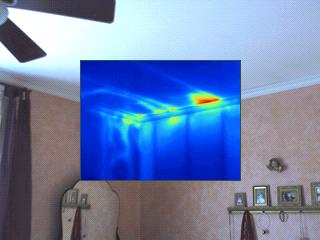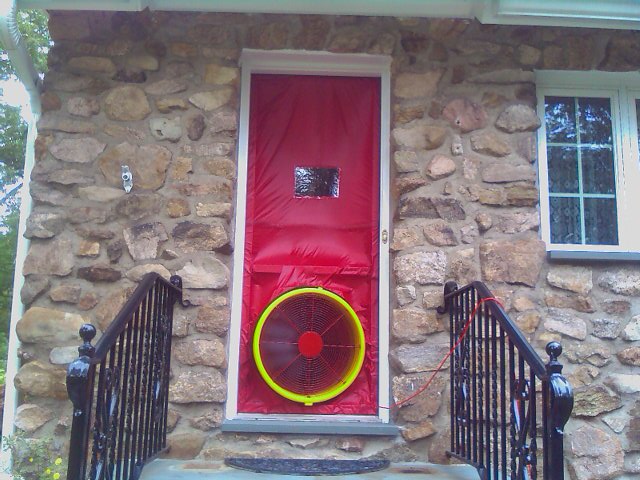Services

Thermal Imaging
Residential infrared heat loss scanning, cutting edge technology can help you fight against escalating home heating and cooling cost.
- Locate heating and air conditioning losses with pinpoint accuracy
- Identifying insulation deficiencies and air infiltration
- Fast non-invasive and safe with minimal disturbance to occupants
- Full written report containing thermo & digital images providing visual documentation
Thermography measures surface temperatures by using an
infrared camera. These tools see light that is in the heat
spectrum. Images on the film record the temperature
variations of the building's skin, ranging from white for
warm regions to black for cooler areas. The resulting images
help determine whether insulation is needed. They also serve
as a quality control tool, to ensure that insulation has
been installed correctly.
A thermographic inspection is either an interior or exterior
survey. Interior scans are more common, because warm air
escaping from a building does not always move through the
walls in a straight line. Heat loss detected in one area of
the outside wall might originate at some other location on
the inside of the wall. Also, it is harder to detect
temperature differences on the outside surface of the
building during windy weather. Because of this difficulty,
interior surveys are generally more accurate because they
benefit from reduced air movement.
Thermographic scans are also commonly used with a blower
door test running. The blower door helps exaggerate air
leaking through defects in the building shell. Such air
leaks appear as black streaks in the infrared camera's
viewfinder.

Blower Door Testing
Getting Started – Blower Door Tests
If you’re not sure where to start weatherizing, a Blower Door Test can be a great investment in tightening up your home.
How It Works
- Blower door tests are performed by certified energy auditors using special variable-speed fans.
- All windows and doors are closed, and the fan is installed in the front door with a special air-tight seal.
- As the fan is turned on, the energy auditor will monitor the flow of air through the fan, as well as the air pressure inside your home.
The Benefits
- Because your home is sealed and evenly pressurized, it’s easy to find out exactly where air leaks are occurring.
- In most cases, you can feel air leaks with your hand or see them with the use of a tissue or smoke pencil.
- While you’d probably expect to find drafts around windows and doors, you might be surprised to learn how much air can leak around electrical outlets and plumbing pipes.
- Blower door tests can also help identify sources of indoor air quality problems, such as carbon monoxide.
Heating and Air Conditioning
HVAC System Design
Custom ACCA Manual
J load calculations, Manual D duct design,and
Manual S system selection for contractors, architects
and homeownersAir Balancing
Boiler / Furnace Efficiency Testing
A heating system is a large user of fuel (natural gas or fuel oil). Old or inefficient heating systems can be very costly. At best, oil systems may be 87% efficient and on average they are probably 65 to 75% efficient. This means that upwards of 30% of the energy in your heating fuel is wasted (goes up the stack). It also means that upwards of 30% of your heating bill is also wasted.Combustion efficiency testing should be performed before costly capital improvements are undertaken, Modern combustion efficiency is measured with sophisticated test sets that can simultaneously measure oxygen, carbon monoxide, excess air levels in the flue gases. The old time method of “eyeballing the flame” could be costing you money.
Before buying a new furnace or boiler or modifying your existing unit, first make every effort to improve the energy efficiency of your home, then have a heat loss calculation done. A heat loss calculation with determine the proper size furnace for your home. Energy-efficiency improvements will save money on a new furnace, because you will need a smaller furnace. A properly sized furnace will also operate most efficiently.
